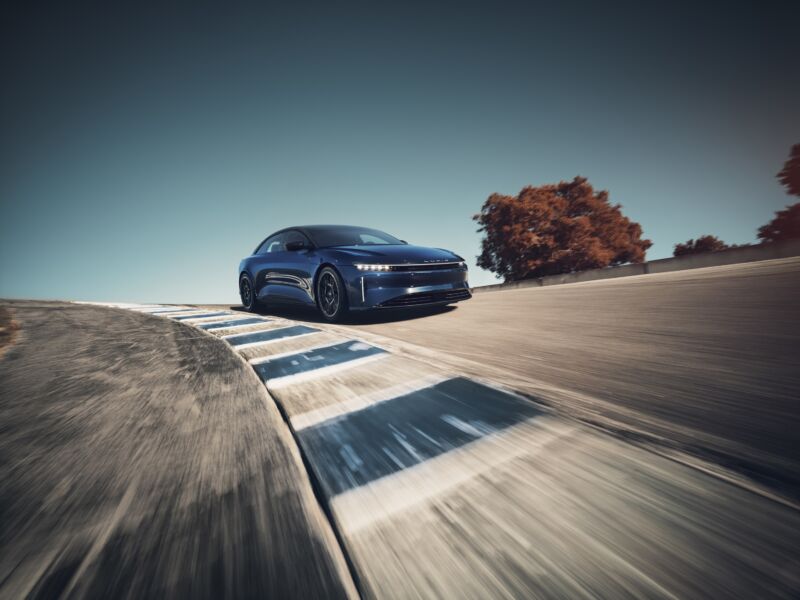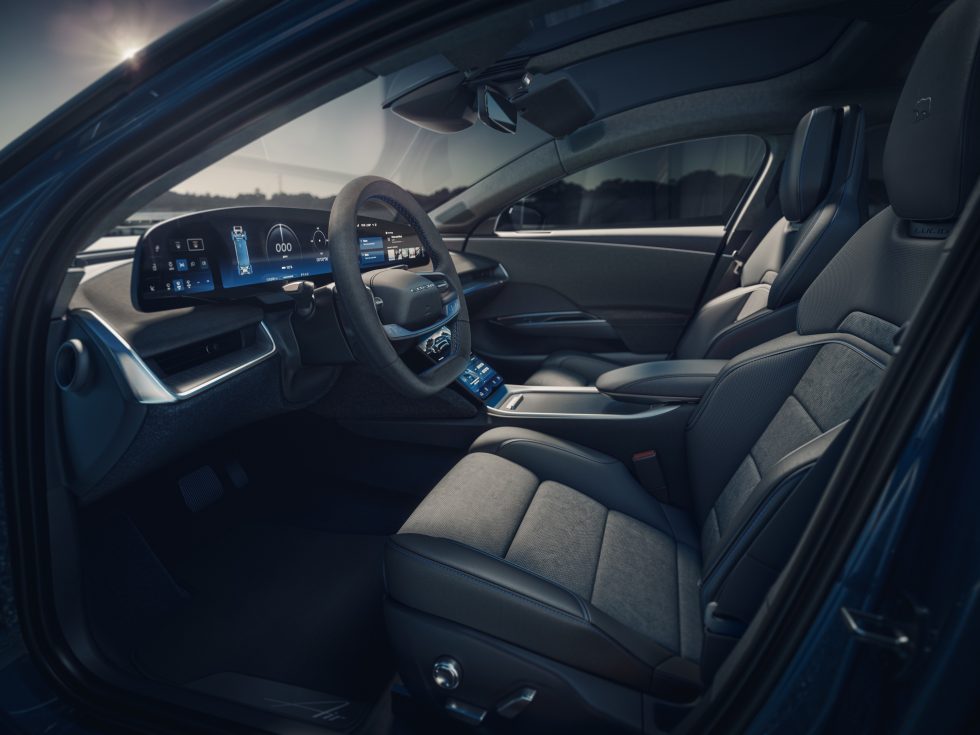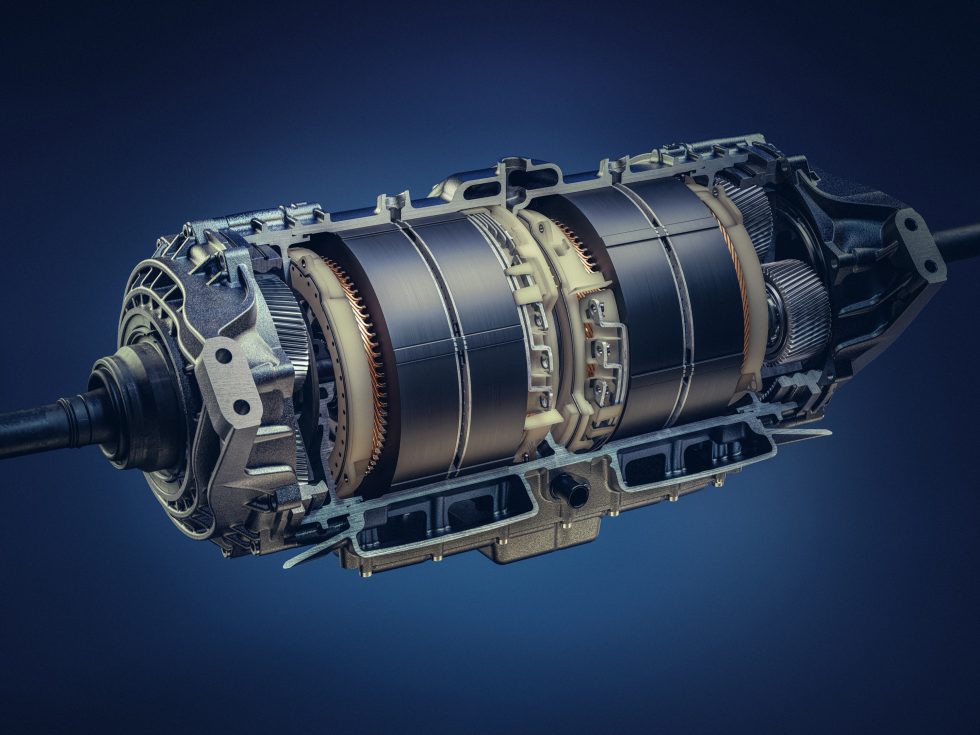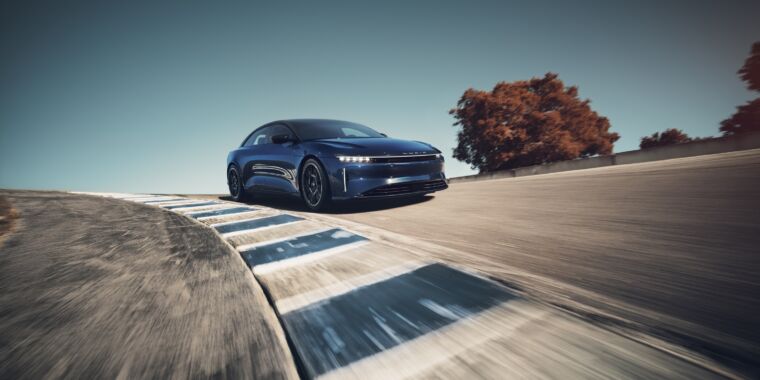
Lucid
On Friday at Monterey Car Week, the electric vehicle startup Lucid added a new variant to its portfolio: the Lucid Air Sapphire. It’s the first of a new sub-brand for Lucid, adding even more performance to cars that were hardly underpowered to begin with. With an extra motor in the mix, the company’s new car should hit 60 mph (98 km/h) in less than two seconds and 100 mph (160 km/h) in less than four seconds while keeping a top speed in excess of 200 mph (321 km/h). Such performance isn’t cheap, however; when the car goes into limited production next year, it will do so with a $249,000 price tag.
The inspiration for both the car’s color and its name came from American racing history.
“Sapphire is the embodiment of what ultra-high-performance luxury means to Lucid. [It] is among the most valued gemstones, prized for their brilliance, color, and hardness,” said Derek Jenkins, SVP of brand and design at Lucid. “Imperial Blue has long been the de facto national color for American motorsports teams engaged in international competitions. As Lucid’s dedicated ultra-high-performance brand, Sapphire references this history while setting new standards for innovation and technology.”

Lucid
In addition to the blue paint, the Air Sapphire has a sportier interior than its siblings. That means black leather and Alcantara, with heavily bolstered seats to keep you in place while experiencing lateral Gs. And there’s a pretty big spoiler at the rear that prevents the car from generating lift at speed.
The engineering changes that make an Air a Sapphire are less visible. Most obviously, there’s the addition of a third motor; the front axle retains a single motor drive unit, but the rear drive unit contains a motor for each rear wheel.
This new twin-motor drive unit can even torque-vector, applying positive torque to one wheel and negative torque to the other. In slow corners, the powertrain can apply power to the outside rear wheel in a corner while regeneratively braking the inside rear wheel, helping the car pivot more rapidly. However, Lucid hasn’t provided an exact power or torque output for the new version yet.

Lucid
Our briefing on the Air Sapphire might even be the first time I’ve heard an EV company talk about the thermal efficiency of its friction brakes. The massive carbon ceramic discs are specced to haul the car back to a stop from nearly three times the legal limit, assuming you have a runway or happen to be in Germany to test that. It also rides on bigger, stickier tires and on stiffer, retuned suspension.
“Our aim with this, our first Sapphire model, is to complement the exceptional powertrain with sharper, more responsive driving dynamics and increased body control. At the same time, it was important to retain the exceptional ride quality for which Lucid Air has come to be known,” said David Lickfold, Lucid’s director of chassis and vehicle dynamics.








